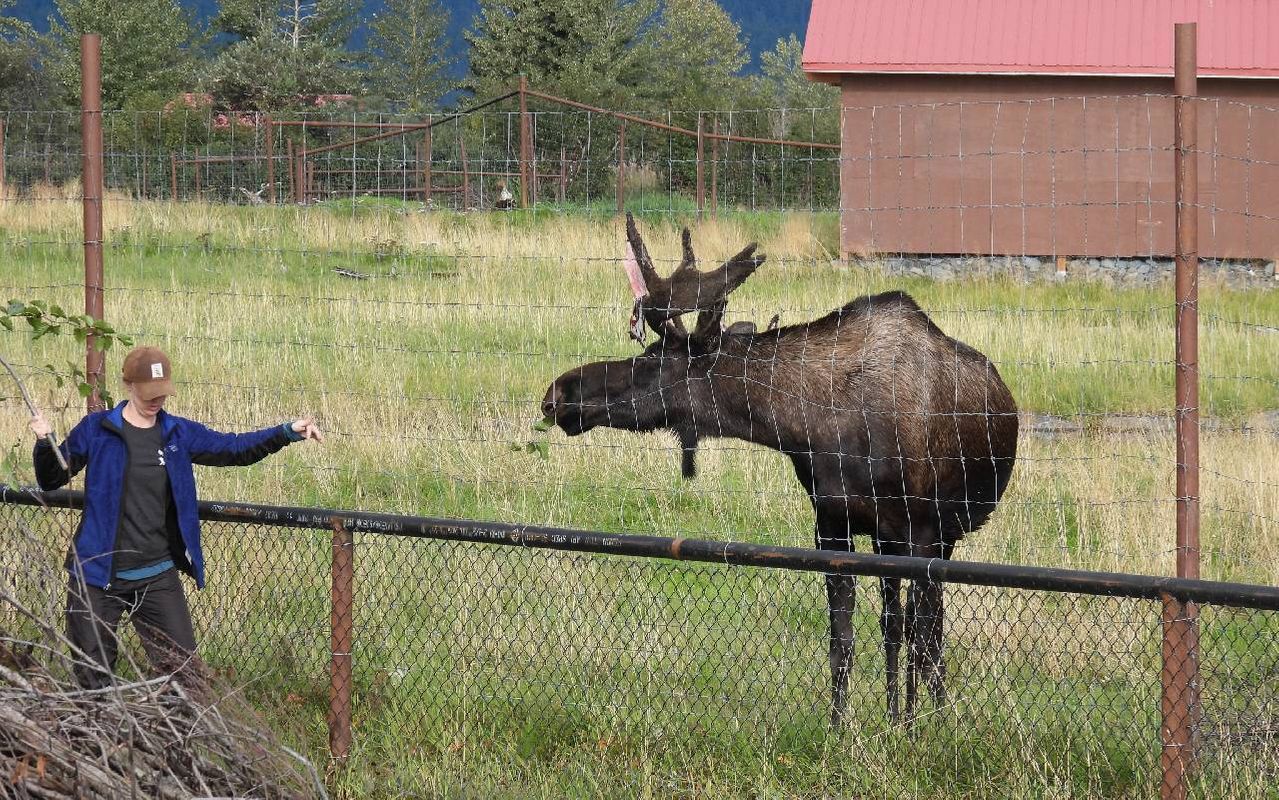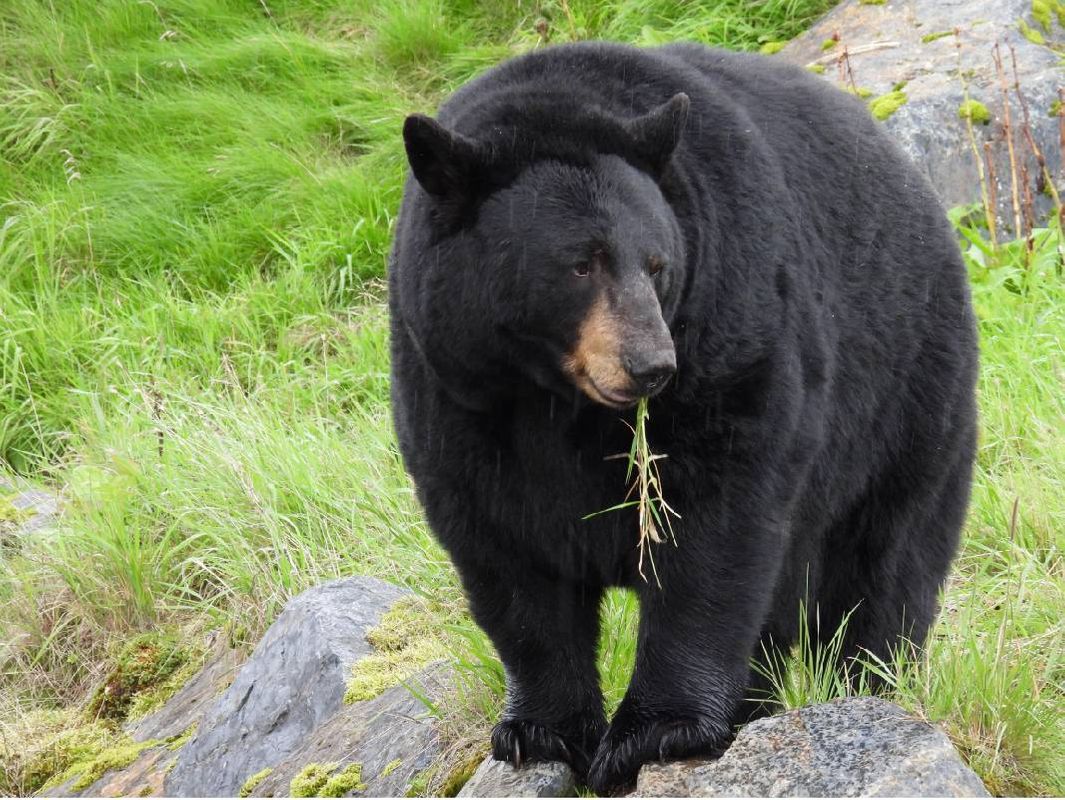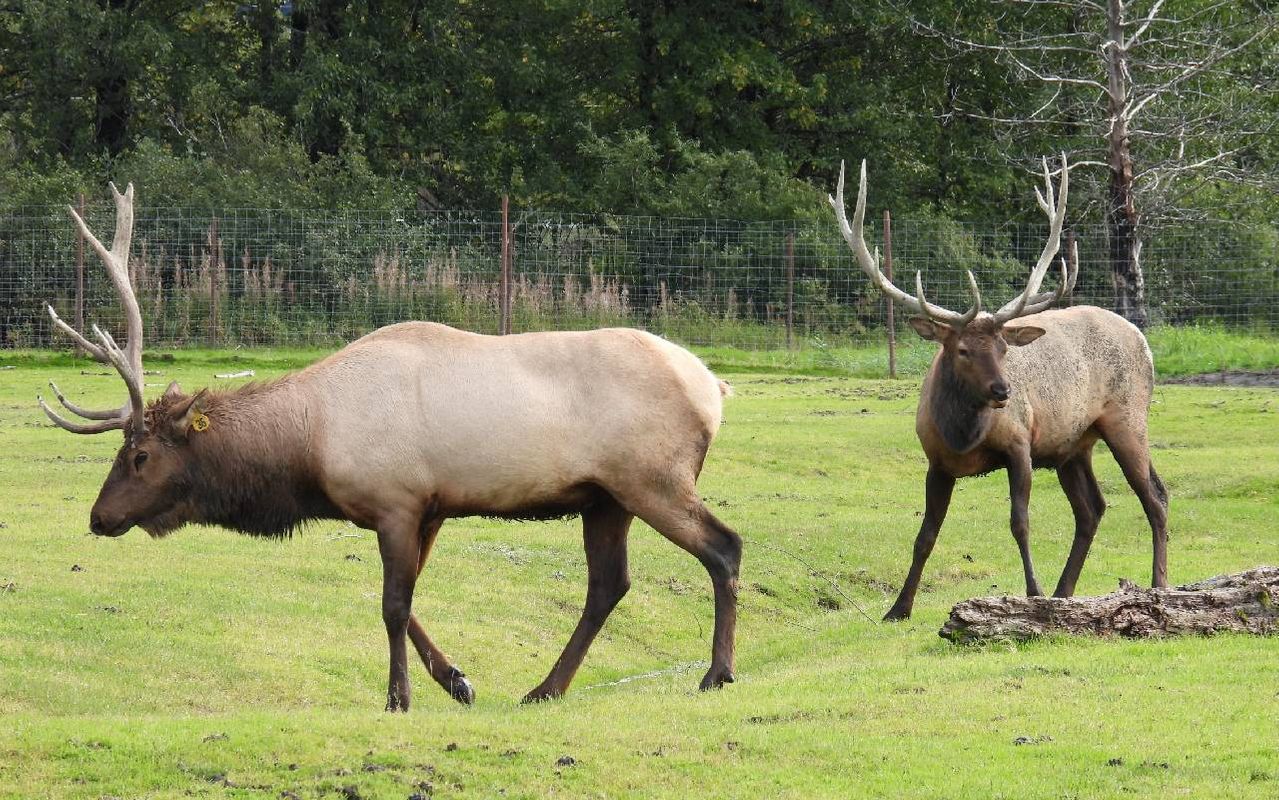Saving Alaska’s Orphaned Wildlife
Visitors are welcome at a conservation center that rescues wild strays and is bringing the wood bison back from the brink
A bison calf saunters to its mother in a pasture framed by the majestic Chugach Mountains, letting visitors soak in a view that had been lost in Alaska for more than a century.

Wood bison disappeared from the state's fields of sage and other plants because of hunting and migration into Canada. But thanks to a breeding program at the Alaska Wildlife Conservation Center, these hump-backed cousins of the better-known plains bison are returning to the state's wild.
The wildlife sanctuary's participation in reintroducing the giant creature grew from the discovery of a small herd in Canada more than a half-century ago. In the mid-1960s, Canadian wildlife officials relocated 23 bison to Elk Island National Park in Alberta to help rebuild its endangered population. Today, about 300 wood bison live in and near the Canadian park.
Brown Bears, Muskox and Moose
While the Alaska conservation center plays a major role in reintroducing wood bison to the 49th state, it is home to dozens of native animal species, from black and brown bears to muskox and moose. The variety gives visitors an opportunity to experience Alaskan wildlife they might not otherwise see.
Each animal at the conservation center was orphaned, too injured or too old to survive in the wild
Each animal at the conservation center was orphaned, too injured or too old to survive in the wild, said Sarah Howard, executive director. Admission to the center is $25 for adults from out of state, with discounted fees for children and Alaska residents.
When Mike Miller opened the center's predecessor, Big Game Alaska, in 1993, he couldn't have envisioned its future as a conservation citadel, let alone a breeding ground for the wood bison. He opened the attraction with a small herd of plains bison, reindeer, musk ox and an eagle, Howard said. Soon after, he was asked to start caring for animals unable to survive in the wild, she said. The name was changed to Alaska Wildlife Conservation Center in 2007.
Helping Hand from Canada
Working with the Alaska Department of Fish and Game, 13 wood bison were relocated to the conservation center in 2006 from Canada. Another 60 were brought in from the Canadian park two years later. With 250 acres dedicated to the bison, the herd grew to about 160 head.

Today, the thunderous sound of hooves pound the surface as bison run across the valley floor, freely traveling about in their ancestral homeland. About 10 years ago, state wildlife officials released 100 wood bison along the Innoko River Valley, near Shageluk. They are protected from hunters at least until herds grow to about 500 head.
As the breeding program continues, visitors can view the wood bison — the largest mammal in the western hemisphere — as part of a 1.5-mile-long loop. While people can drive the loop or ride a bicycle, it's best to walk the route, giving visitors an up-close view of the animals. Males can grow to six feet tall and weigh more than 2,000 pounds; females weigh about 1,200 pounds.
Bears Are a Crowd Favorite
Other popular attractions at the conservation center are a 14-acre enclosure for brown bears. Three of these animals, including Hugo, a 24-year-old grizzly, roam the heavily vegetated enclosure, which has a swimming hole where the bears frolic during warm summer days. A boardwalk takes visitors above the bear exhibit, offering unique views of the animals.

Two men found Hugo abandoned and injured with porcupine quills embedded in her paws. Wildlife officials reached out to the conservation center and Hugo had a new home. Two larger brown bears, Joe Boxer and Patron, joined Hugo in 2004, after a resident of Willow, a small community about 40 miles north of Anchorage, shot and killed the bears' mother, thinking she was going to attack a dog.
While brown bears seem to capture the romance of the ursine family — was Yogi a brown bear? — the Alaska Wildlife Conservation Center is also home to three black bears. They are the smallest bears, weighing 400 pounds or less, and entertain with their movements and looks.
Three Orphaned Cubs
Uli was a runt, weighing only 5 pounds when she was found roaming downtown Fairbanks. Unable to find her mother, the cub was brought to the conservation center. Uli is known for rolling around and devouring watermelon as a favorite treat. Joining Uli at the sanctuary in 2002, Kuma had fallen into a septic system being installed at a home. Weighing three pounds and without his mother, the cub was adopted by the wildlife facility.
Discovered in Valdez in 2016, Kobuk had been separated from his mother, who had been chased off by a dog. The cub resorted to dumpster diving to survive. Realizing this behavior could lead to nasty encounters with humans, locals rescued Kobuk and sent him to the wildlife center.

Because of the 14-year age difference between the cub and the other black bears, he was kept on his own at the center. Kobuk was named for Kobuk Valley National Park, as part of the centennial celebration of national parks in 2016.
Today, the nine-year-old bear is a favorite among visitors. With youthful energy, Kobuk climbs trees and plays with honey and berry-filled balls. Involved with care keepers from the start, Kobuk has developed a social lifestyle with his handlers.
Growing Arctic Menagerie
Muskox, which resemble a cross between a cow, bison and woolly mammoth, are actually members of the goat family. Males spar for dominance by taking a running start and smacking their heads against each other at speeds up to 20 mph. This annual ritual, seen in the fall, can sound like a car running into a concrete wall. The animal's fur is soft and warm.
Adonis the American bald eagle has called the wildlife center home for about 30 years, since he was wounded by gun fire and had his left wing amputated.
Alaskan wolves are primarily black and gray in color, but they also can be tan. Southern wolves are often smaller and darker than north Alaska counterparts. They tend to travel in packs of five or six members, although some have been known to exceed 20 wolves.
The sanctuary is home to four Alaska gray wolves. Bri, named for the Bering Strait, and Deshka, which shares a name with an Alaskan river, were born at a game facility in Montana and removed to the center in 2015. The females have served as ambassadors to the public.
Deshka assumed the "Alpha" role, leader of the conservation center's wolf pack. Lothario, 8, was born in Oregon. He loves playing with toys and often is seen with a ball in his mouth. Dirus, also 8, enjoys laying in the sun.
Moose on the Loose
Of course, no Alaskan animal attraction is complete without a moose, right? The moose duo at the sanctuary were named after literary characters: Jo for the protagonist in "Little Women" (orphaned when an Anchorage man killed her mother in self-defense) and Pip for "Pippi Longstocking" (found alone in the city of Seward). Both participate in the center's animal encounter program and can be fed by visitors for an extra fee.
Adonis the American bald eagle has called the wildlife center home for about 30 years, since he was wounded by gun fire and had his left wing amputated. While it is illegal to harm or kill bald eagles, the Fish and Wildlife Service says that as many as 3,000 eagles are shot annually across the United States.
The conservation center also is currently home to reindeer, elk and other large animals, as well as coyotes, foxes, porcupines and the American red squirrel.


